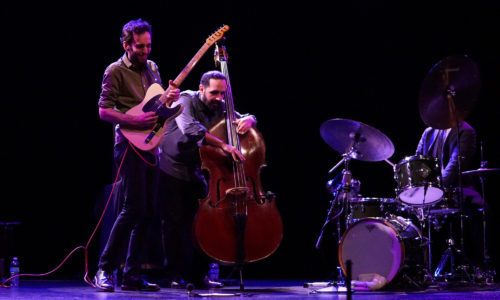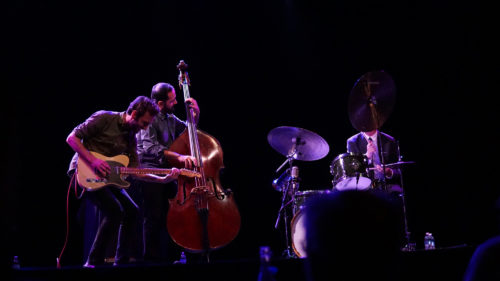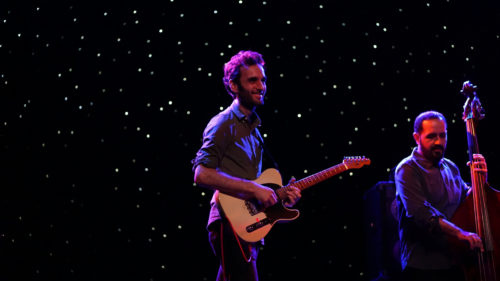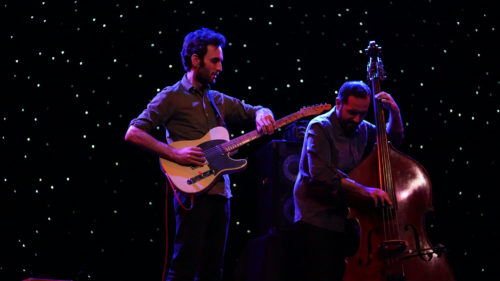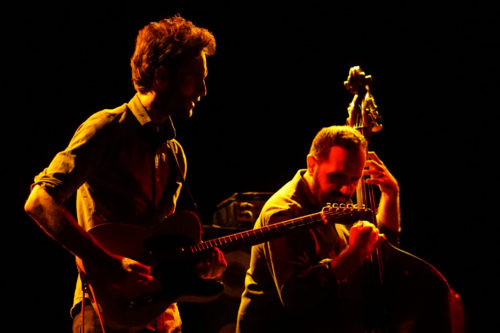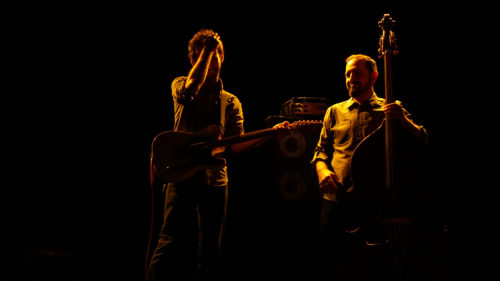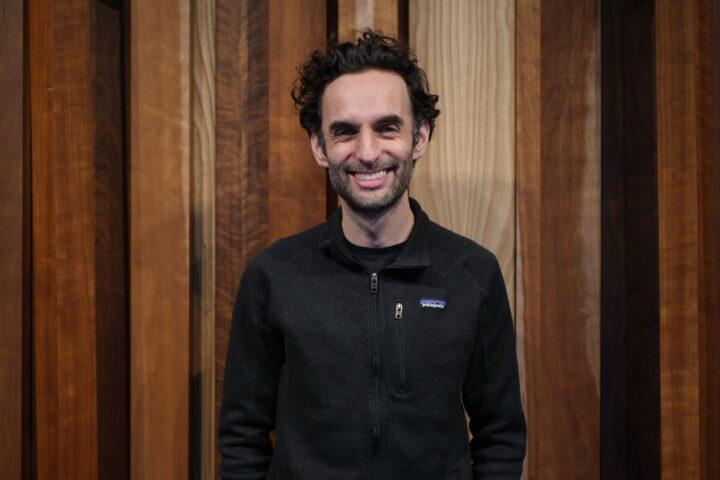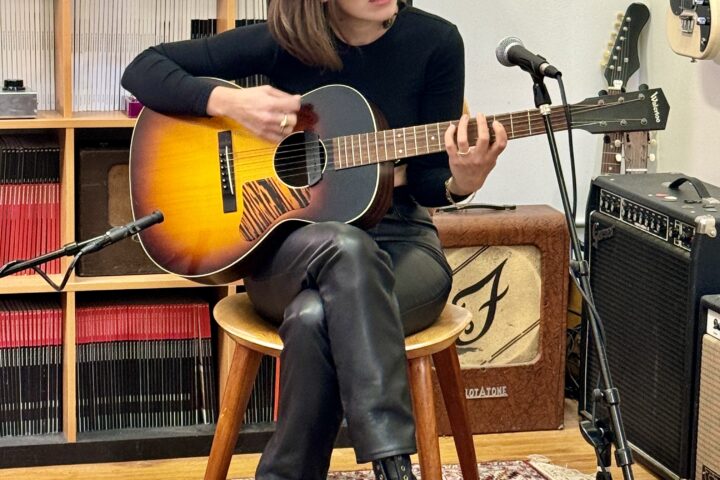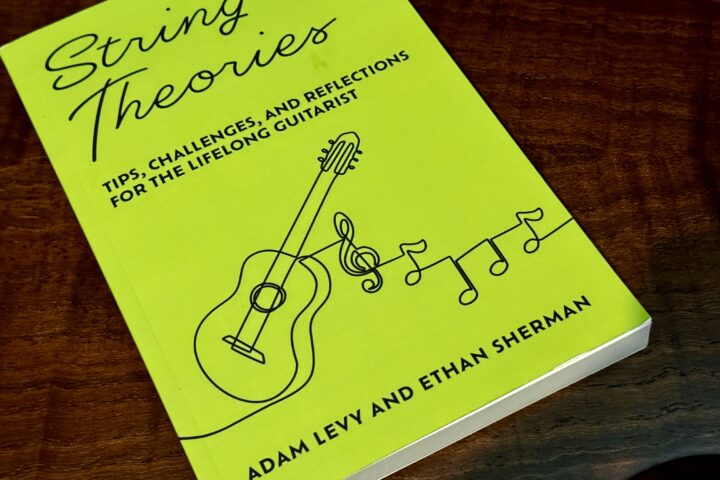Not too long ago Julian Lage put out a lovely little record called Arclight. It’s an album inspired by an appreciation for Telecasters that dates all the way back to Lage’s days as an 8-year old prodigy and grew deeper with his acquisition of a ’54 Blackguard. He toured most of the summer supporting the release, including a stop at the Triple Door in Seattle that blew our collective mind, featuring Bill Frisell sitting in for a few numbers, much to everyone’s delight. Getting Julian’s trio into the office wasn’t practical, but we were able to chat with him soon after. Here’s a bit of that conversation, along with a few pictures from the show.
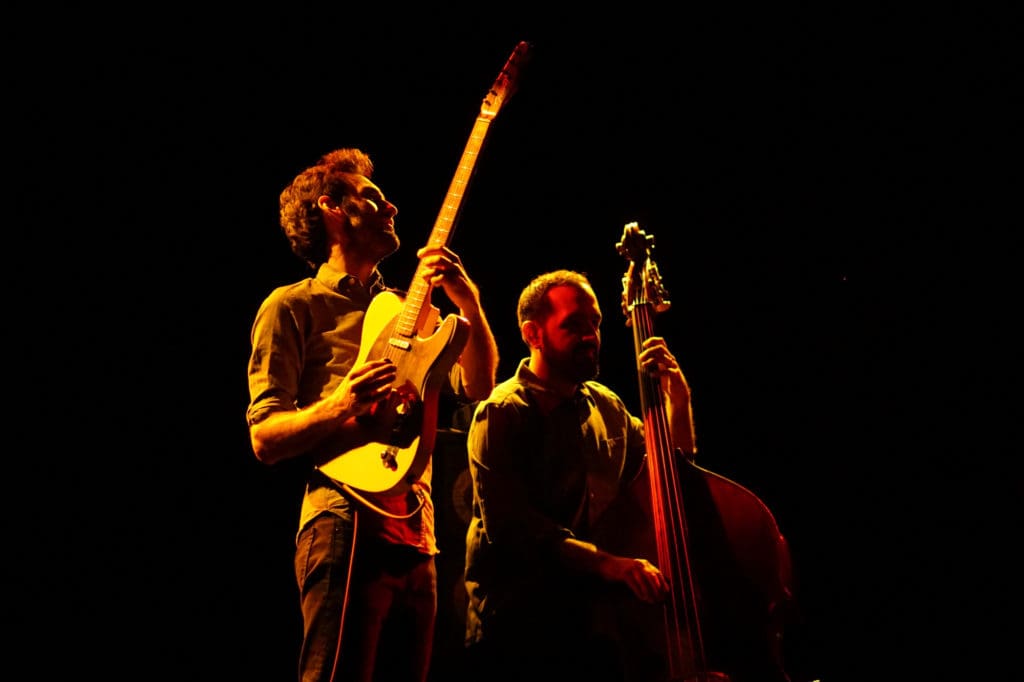
Fretboard Journal: What’s the story with that Tele? You had just got it the last time you stopped by…
Julian Lage: Right, right! It’s a ’54 Tele that I think went back for a [factory] refinish in ’57. I got it from Paul McKenzie, from Fiesta Finishes in Berkeley, California, and he had just refinished it. As a guitarist you know that those are kind of untouchable, usually, as far buying them, or finding them at a reasonable price, but because it had two refinishes it wasn’t exactly “stock.” The pickups and everything else is original, it’s just been painted a couple times.
I love that guitar. My God, it is really… it teaches me a lot about how to get better. I think, of the Blackguards I’ve played, it’s a little bit darker than a lot of them.
FJ: That was my next question. It did seem like, even when you were on the bridge pickup, it tended kind of dark. I was wondering if it was the amp or the guitar…
JL: It’s largely the guitar, but it’s also – that amp is a dark amp. It’s a funny alchemy between the two of ‘em, because they really are well-suited to one another. They’re really similar, so any properties of the guitar – if the strings are especially dead the amp will kinda point that out a little more explicitly and sound extra dark. In general, it’s not a bright setup. There’s brightness when I want it, but I like it a little darker, just the way it blends with the bass and everything.
FJ: It’s certainly not muddy…
JL: Well, it’s right on that verge. It could go muddy if it were loud enough, but that amp doesn’t get very loud. I think of the amp as a saving grace – you can’t get too loud, you can’t get too bright, so it really rewards a kind of clarity. I need to be really clear with my ideas or else it just sounds… small. It’s a fascinating study.
FJ: And the amp is a [Fender] Champ?
JL: Yeah, that’s a 1960 Champ. I’m a Champ-obsessed person. We have a couple of them at the house. They’re really cool.
FJ: Is that the one that Margaret [Glaspy] used on her record?
JL: I think it was that one for part of it. Also, she used a ’59 tweed Vibrolux that I had for a lot of that record, and then we bought another one. I traded in the Vibrolux for another Champ – I think a ’58 or a ’59? That’s the one she tours with, so we have mad his-and-her Tele/Champ setups, basically.
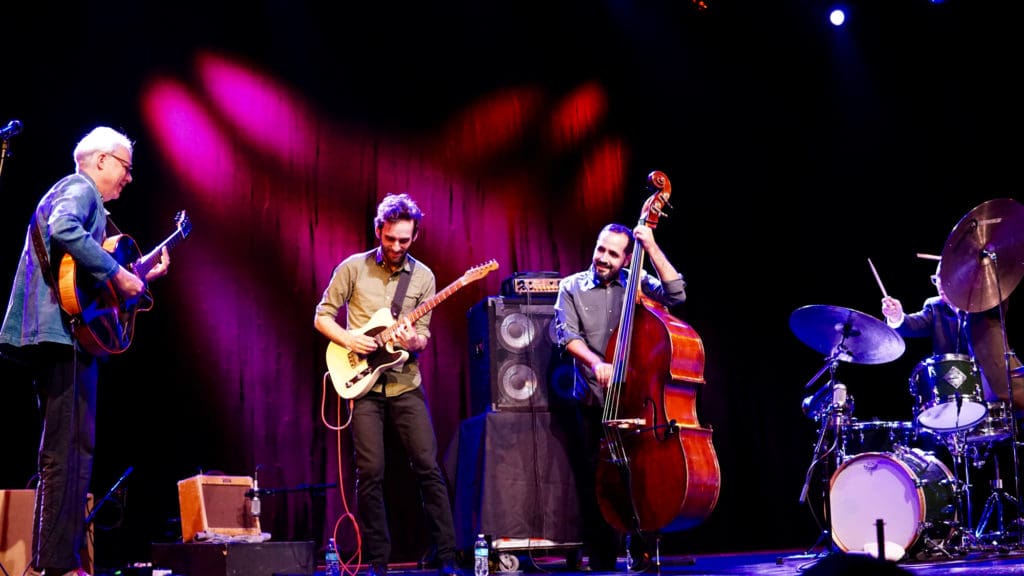
FJ: That’s perfect! I noticed that you and Bill both basically had a tuner and a [Strymon] Flint for your setups…
JL: That’s right! The only difference is he actually used his tuner – I forgot to [laughs]… but I love the Flint, as far as reverb goes. There have been a lot of shows with the trio where I don’t use reverb because, for one reason or another, the amp just sounds good without it. I’ve always used reverb, and I always love it, within reason, but somehow that amp is really funny. I feel like I have to play to the amp the way that I’d play an old Martin – really, the clarity of rhythm and syncopation.
At soundcheck, I usually do a lot of playing without reverb so I can feel: OK, I’m finding a tempo that works with this, I’m not rushing through things, I’m getting a nice sound, and if that feels good then at the last minute I’ll turn on just a little reverb, mostly… I think, for what it does to the high end frequencies – it can kind of glue together the mid and high range a little bit. It’s almost more than an echo. I’ve noticed this before, with it off you almost hear every note really separate from the neck – there’s such separation, but with that Flint it blends, I think, from the G string to the high E string; it makes those a single sound. It really is glue…
You know, it’s funny – I don’t really think I’d think of it that way if I hadn’t had a belabored experience thinking about reverb in the recording studio with the solo guitar record I did a little while back [World’s Fair], because then I was really trying to not go for a guitar in a cathedral kind of thing, so reverb ended up being this EQ mechanism, where I thought, “Oh yeah! That technically is what it can do… it can massage those lines, rather than leaving a tail of reverb.” So when I went back to test the pedal world of reverb it was very educational. The Strymons are great. I don’t know any of the folks over there, but as a fan who buys their pedals, I’ve always been very impressed with them.
FJ: You don’t delve into the tremolo end of it at all?
JL: When I first bought it I did, but not on stage…
I was talking to Margaret about this on the phone last night, because I’m out here doing some solo guitar shows. I brought a second acoustic and I switched to it during a song and it was cool to me, but what I realized was, I felt like, from a listening perspective when I switch it was almost like a reminder that it was a guitar and not a speaking voice. Similarly, with the Tele, whenever I’ve added things to it, it takes me out of it – “Oh yeah, it’s a guitar with effects” – no matter how good the effects sound, rather than forgetting that there’s even a guitar, you’re just hearing a conversation.
I have a funny relationship with those things. I love them and I find them really inspiring, but I always feel a little bit awkward, and I always witness masters who do it, like Bill or Nels [Cline], and it’s almost pushed me in the other direction, where I just say, “God, those guys are so good at it, such magicians, I’m just gonna keep plucking away with one sound as much as I can…”
FJ: Understandably! Are you using the Flint for acoustic, too?
JL: Oh, no. The Flint I only use with electric. For the acoustic, we had this other setup in the studio – it was a Bricasti, I think it’s called, which is a modeling reverb; I think we used “Waits Room”…
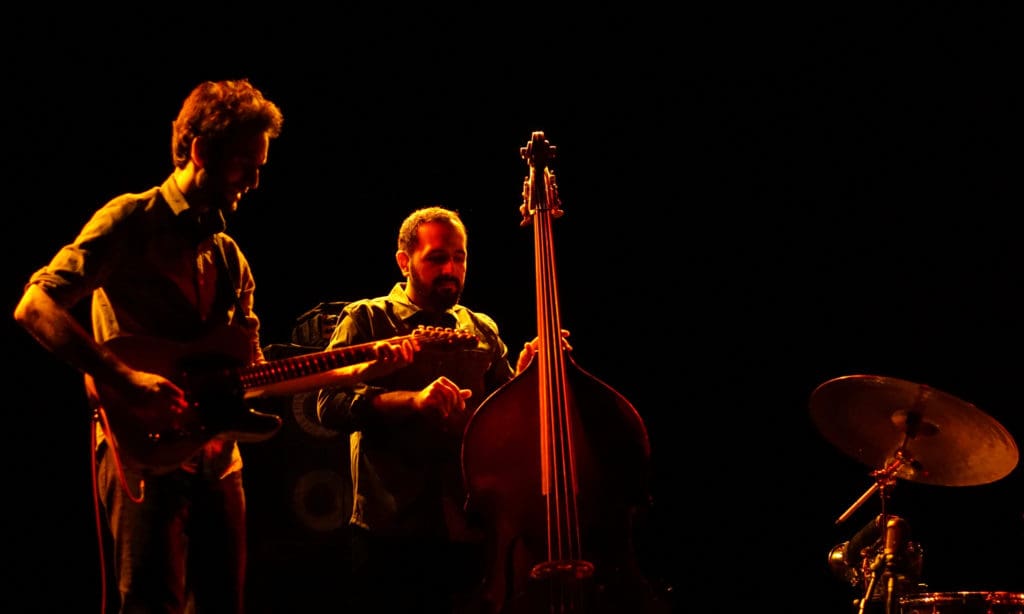
FJ: Is that what you used on Arclight?
JL: Arclight has the Strymon Flint and it has a studio spring reverb, a big box… I’ve always used plate reverbs in the studio, but I think the same company that makes those plate reverbs made spring reverbs, which were big boxes. I never knew there was an equivalent until we went to this studio, Brooklyn Recording, and they had it. It’s just like a reverb tank in a Fender, but about five times the size. There’s a little bit of that on everything. And on Arclight I’m using a ’53 tweed Super, so it’s a bigger amp and it’s recorded a lot louder.
FJ: These solo shows that you’re doing, are you bringing an acoustic and a Tele?
JL: For these, I’m just bringing acoustics. I did just one Tele solo show, with the Champ, about six months ago and it was a blast, however I’m shipping my gear from L.A. – I finished that tour out west – and I just didn’t have it in time. I have a ’39 000-18 Martin that I play a lot and I also brought along a Waterloo Kel Kroyden [WL-K] that I really love. I’ve long been a fan of the Waterloos, and they make a replica – I should say a “reimagining” – of a Kel Kroyden, which is a 12-fret guitar. I really love it. That’s the one I used last night a little bit. It’s just one microphone, no monitors, a really stripped down setup, but it’s really, really fun.
FJ: Before “Days of Wine and Roses” you asked Bill what key he wanted to play it in (he picked F, its original key). Whenever he’s in the office, playing duets with someone – like Matt Munisteri or John Pizzarelli – and he picks the key, they tend to give him a funny look. Were you surprised at all?
JL: [Laughs] Not too much, but that’s not to say that I know what I’m talking about, because I don’t. Keys are funny to me. I feel a little less sensitive to them than others. Matt Munisteri, for example, I think of him, and John, too, for that matter – I just happen to know Matt more, as a close friend – but Matt is so sensitive to the origin of this music. What I mean by that is I think he sees a lot of what makes harmony and voice leading effective in music has to do with, kind of, the frequency range, in other words the key that it’s in. It matters that the song is originally in A-flat; it’s not going to be the same song in B-flat or B. There are certain keys that are brighter than others. I’ve always, always admired that greatly, that he has that ability to see that in a song. I, on the other hand, am a little more dumb about it, or I’m just, “Ah, that’s 5th fret versus 7th;” I think of it maybe a little more grid-like.
Having said that, I’ve learned a lot from Matt about the importance of keys, and, come to think of it, Bill… All I know is, with Bill, he always picks the right key. F is perfect for that song. Not to say I know it in other keys, but that felt great from a resonance point of view. When he does “Surfer Girl,” the way he does that in D and then modulates to E-flat is really effective; it would be a very different song if he started it in C-sharp and modulated to D.
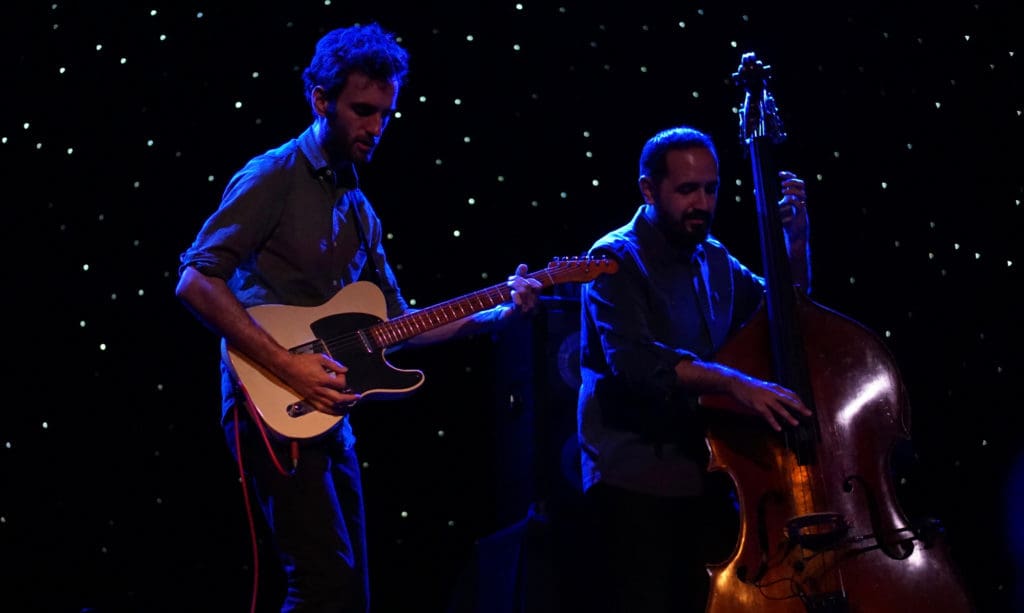
FJ: Are you worried that the guy who goes to Bill’s gigs and yells “Play the Tele!” whenever he plays something else will start doing it at your gigs?
JL: [Laughs] Nooo… Not at all! It’s funny, because I, too, am that fan, where it’s like I get a kick out of seeing what people play, a kick out of wishing, hoping that they play something, like you’re talking about with Bill. Personally, I think it all kind of sounds the same at the end of the day. I was talking to Bill about that – on the surface there could not be more difference between a 1930s Martin and a Blackguard Tele, through a tweed Champ, if you’re looking at it from a gear point of view. But there is a fundamental resonance: I think once they’re out of the speaker or out of the guitar there’s a continuity, and the guitars for me represent different ways to get there. With the Tele I have to slow down so much more than most guitars. I have to slow down so much, in terms of my attack, vibrato, because if I go into speed I’m accustomed to it overpowers the guitar and it just kind of shuts down. For me the Tele is kind of like having a teacher, where you’re just, like, “OK, I want to learn how to do this without exerting so much energy.” And then with the Martin I have to dig in more, but when I hear recordings of both, they’re kinda the same thing [laughs].
That’s my experience with it. As far as what other people expect, like last night, for example, I think it was billed as a trio show, and there were a lot of people expecting that – they wanted this loud experience… not even loud but this big sound experience, and I went out there and I didn’t do that, yet it didn’t feel like a total letdown. I liked that, that people could expect one thing and maybe be surprised and satisfied by another. It almost put a pressure on me that I like. I like that people have expectations.
And then: the Telecaster is so cool, it is so hip. It’s one of those things, that, it’s a guitar, sure, but it’s a Tele – it’s a different thing. I have so much respect for the lineage, I’d be very honored to be considered someone who plays a Tele. At the same time, I think that probably, in the long run, I’m not worried about anyone being let down.
